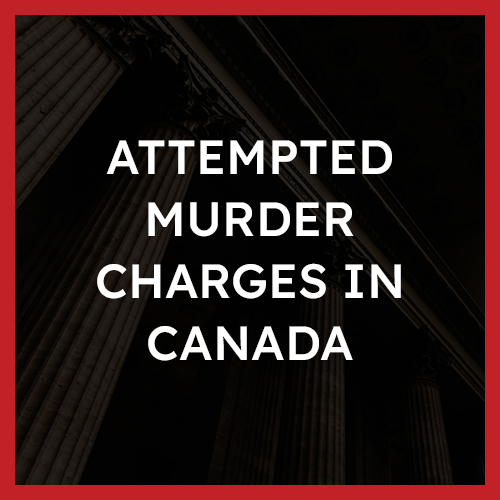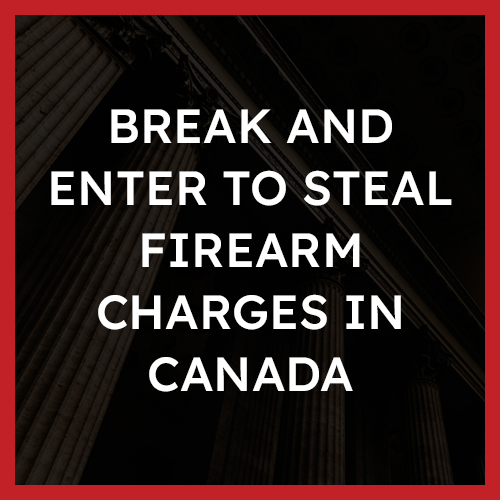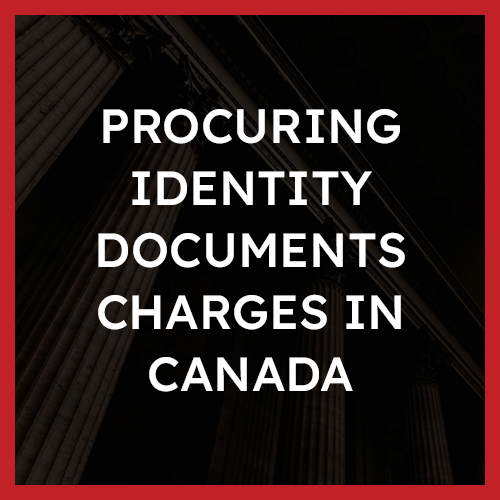Attempted Murder (s. 239) Charges in Canada: Offences, Defences, Punishments
What is “Attempted Murder” in Canada
 Attempted murder is criminalized under section 239 of the Criminal Code of Canada. Attempted murder is a very serious offence and is, therefore, automatically prosecuted as a straight indictable offence (the more serious category of the two types of criminal offences in Canada). Attempted murder involves an intention to kill which is either interrupted or not followed through on. In other words, it is the incomplete or unsuccessful act of killing someone. As a principle adopted in a case called R v Henderson, 1947 CanLII 370 (BCCA), “… if the actual transaction has commenced which would have ended in the crime if not interrupted, there is clearly an attempt to commit the crime.”
Attempted murder is criminalized under section 239 of the Criminal Code of Canada. Attempted murder is a very serious offence and is, therefore, automatically prosecuted as a straight indictable offence (the more serious category of the two types of criminal offences in Canada). Attempted murder involves an intention to kill which is either interrupted or not followed through on. In other words, it is the incomplete or unsuccessful act of killing someone. As a principle adopted in a case called R v Henderson, 1947 CanLII 370 (BCCA), “… if the actual transaction has commenced which would have ended in the crime if not interrupted, there is clearly an attempt to commit the crime.”
Examples
Some examples of attempted murder could include:
- Shooting someone with a firearm yet the victim survives
- Pointing a loaded firearm at someone
- Showing up at a residence with a plan in place to kill someone
- Stabbing someone continuously yet the victim survives
- Relentlessly beating someone or attacking someone physically yet the victim survives
- Poisoning someone with an amount of poison understood to normally be lethal and yet the victim survives
There are many ways in which an attempted murder could be carried out and this is not an exhaustive list.
Defences
A strong defence to a charge of attempted murder will depend on the circumstances of one’s case.
However, some defences which are commonly asked about or referred to include:
- Lack of intent to kill (lack of mens rea)
- Self-Defence
- Applicable Charter Defences
These are all discussed in more detail under our “Attempted Murder Defences” heading here.
Punishment
The maximum punishment for attempted murder is life imprisonment. If no weapon or a weapon besides a firearm is used there is no minimum penalty. In other words, the court may use its discretion in structuring an appropriate sentence. Where a restricted or prohibited firearm is used or the attempted murder is carried out in affiliation with a criminal organization, the minimum term of imprisonment is 5 years. This is unless this is a second offence of its kind for the offender, then the minimum penalty is 7 years imprisonment.
If a type of firearm is used which is neither restricted nor prohibited, the minimum sentence is 4 years imprisonment. This is all sanctioned under section 239(1) of the Criminal Code.
Overview of the Offence
According to section 239 of the Criminal Code:
239(1) Every person who attempts by any means to commit murder is guilty of an indictable offence and liable
(a) if a restricted firearm or prohibited firearm is used in the commission of the offence or if any firearm is used in the commission of the offence and the offence is committed for the benefit of, at the direction of, or in association with, a criminal organization, to imprisonment for life and to a minimum punishment of imprisonment for a term of
(i) in the case of a first offence, five years, and
(ii) in the case of a second or subsequent offence, seven years;
(a.1) in any other case where a firearm is used in the commission of the offence, to imprisonment for life and to a minimum punishment of imprisonment for a term of four years; and
(b) in any other case, to imprisonment for life
For the Crown to prove attempted murder, the mens rea (the mental element or intent to commit the crime) must be proven alongside the actus reus (the actual act or attempt). Because without a clear intent and only an act, attempted murder is almost impossible to prove, the intent element is the most important aspect of the crime for which the Crown must demonstrate (see: R v Cline, ). While both the mens rea and the actus reus must be shown for a conviction, the mens rea demands ample attention and consideration in attempted murder cases. Both elements of the crime are discussed immediately below.
The Guilty Act (Actus Reus)
The actus reus of attempted murder need not be a crime itself or even a tort (an act for which civil liability could be assigned) [see: R v Cline, ]. The act itself must be more than mere preparation, but the act can be as simple as taking only one step further than preparation. If the actual act which is being identified as the ‘attempt’ is in and of itself ‘innocent’, evidence of similar acts being done before or after are admissible. Furthermore, the act does not need to cause any actual harm to constitute an attempt (see: R v Gordon, 2009 ONCA 170 (CanLII)).
As per R v Mantley, 2013 NSCA 16 (CanLII): “it is not necessary to be in a position to commit the murder to be convicted of attempted murder.” For example, in R v Goldberg, 2014 BCCA 313 (CanLII), both of the accused formed an intention to kill a woman. Each of the accused obtained a firearm and confronted her, pointing the firearm at her, but neither pulled the trigger at that time. Nevertheless, each was found guilty of attempted murder for having taken steps beyond mere preparation, to kill the intended target.
Where the evidence of intention is sufficiently clear, the court may find that going to the place of an intended offence suffices to prove an attempt (see: R v Byers, 2017 ONCA 639 (CanLII)). In a case called United States of America v Dynar, 1997 CanLII 359 (SCC), [1997] 2 SCR 462 (a Canadian case) it was noted that “a person may be convicted of attempt, even when completion of the criminal act was impossible at the time”. In accordance with section 229 of the Criminal Code, which defines murder, the attempt must be to “cause the death of a human being” or “cause him bodily harm which he knows is likely to cause his death”.
The Guilty Mind (Mens Rea)
The most important element for the Crown to prove in attempted murder cases is an “intent” to murder. This is not always a straightforward task for the Crown. The intent to murder on its own is not sufficient for an attempted murder conviction (see: R v Cline, ). Here, the Crown is tasked with proving a specific intent to kill. As discussed in The Queen v Ancio, 1984 CanLII 69 (SCC); [1984] 1 SCR 225, “a basic element of the offence of attempt is the attempt to commit the desired offence. Since the completed offence of murder involves a killing, the intention to commit the completed offence of murder must include an intention to kill”.
The prosecution need not prove that the purpose of the act was murder but must prove that the defendant either specifically intended to kill, or intended to do an act that he knew would virtually certainly wind up killing the victim. For example, in R v Boone, 2019 ONCA 652 (CanLII), the defendant contracted HIV. For sexual gratification, he sought to infect his sexual partners with the disease. His purpose — sexual gratification — did not negate an intention to kill. Despite transmitting the disease with the purpose of sexual gratification, sufficient intention to kill could be established because the defendant would have to have known that his acts would possibly or probably kill his sexual partners.
The Crown can draw inferences of an attempt based on certain facts. Although the prosecution must prove intent to kill beyond a reasonable doubt, a court may infer the accused’s intention to kill from the circumstances and the inference that a person intends the natural consequences of his or her actions. For example, the use of a firearm at close range implies an attempt to kill (see: R v Bains, 1985 CarswellOnt 1590, 7 OAC 67 (Ont CA)). The Crown must never confuse an inference for a presumption (see: R v Giannotti, 1956 CarswellOnt 11, 115 CCC 203, 23 CR 259 (ONCA)). To infer an intention does not assign automatic guilt and a strong defence attorney will hold the Crown accountable to this distinction.
Attempted Murder Defences
The availability and strength of any defence depends entirely on the specific facts of one’s case. However, the following are some frequently referenced or frequently asked-about defences that may be used when fighting an attempted murder charge:
Lack of intent to kill (lack of mens rea)
As discussed above (see discussion here), the Crown must prove a specific intent to kill. Without evidence to support this contention beyond a reasonable doubt, there is no crime of attempted murder. It is not enough to show that the accused committed bodily harm that was likely to cause another person’s death or was reckless. Note: in cases where intent cannot be proven, but there is evidence supporting the fact an assault did occur, you could face more relevant criminal charges such as assault causing bodily harm (see our article on assault here).
Self-Defence
Self-defence is an available defence to an attempted murder charge.
The defence is statutorily embedded in the Criminal Code under section 34. Section 34(1) says that:
(1) A person is not guilty of an offence if
(a)they believe on reasonable grounds that force is being used against them or another person or that a threat of force is being made against them or another person;
(b)the act that constitutes the offence is committed for the purpose of defending or protecting themselves or the other person from that use or threat of force; and
(c)the act committed is reasonable in the circumstances.
Parliament requires under section 34(2) of the Criminal Code, that the court consider an array of factors when adjudicating the plausibility of self-defence including but not limited to:
- the nature of the force or threat;
- the extent to which the use of force was imminent and whether there were other means available to respond to the potential use of force;
- whether any party to the incident used or threatened to use a weapon;
- the size, age, gender and physical capabilities of the parties to the incident;
- the nature and proportionality of the person’s response to the use or threat of force, etc.
As established in the case of R v Cuhna, 2016 ONCA 491 (CanLII), the section 34 test requires three elements:
- Reasonable Belief: “the accused must reasonably believe that force or threat of force is being used against him or someone else”;
- Defensive Purpose: “the subjective purpose for responding to the threat must be to protect oneself or others; and”
- Reasonable Response: “the act committed must be objectively reasonable in the circumstances”.
Self-defence is a full justification for murder. It is to be considered in situations of “last resort” where a jury would accept that “the accused believed, on reasonable grounds, that his own safety and survival depended on killing the victim at that moment” (see: R v Cinous, 2002 SCC 29, [2002] 2 SCR 3).
Applicable Charter Defences
The Canadian Charter sets out your rights and freedoms before and after your arrest. If the police fail to abide by these rights, either deliberately or inadvertently, it could aid in your defence. If any of your Charter rights have been violated before or after your arrest, you may be able to have some or all of the evidence that the Crown is relying on to secure a conviction excluded under s.24(2) of the Charter.
Attempted Murder Punishments
The maximum jail term for attempted murder is life. However, as per section 239 of the Criminal Code, different minimums apply depending on the weapon, the offence and the offender’s history.
Attempted murder with the use of a restricted or prohibited firearm, or in affiliation with a criminal organization
- 5 years minimum
- 7 years minimum if the second offence of this type
Attempted murder with a firearm
- 4 years minimum
Another type of weapon or no weapon
- No minimum
Sanctions for attempted murder convictions are not isolated to a term of imprisonment and can carry other potential dispositions in addition to a prison sentence or as an alternative.
Some of the other potential sentences for an attempted murder conviction might include:
- Fines including Victim Fine Surcharge (see: sections 734 and 737 of the Criminal Code).
- Firearms prohibition (see: section 109 of the Criminal Code). Note: The Crown, in instances where this is an offender’s second attempted murder offence, can deliver a notice to seek greater punishment as per section 727 of the Criminal Code before a plea of “guilty” or “not guilty” is entered. After conviction, the court must prohibit the offender “from possessing any firearm, cross-bow, restricted weapon, ammunition and explosive substance for life.
- Probation (see: section 731 of the Criminal Code).
- Victim Protection (see: sections 1(3)(a.1), 732.1(3)(h), 742.3(2)(a.3), 742.3(2)(f) and 743.21 of the Criminal Code). Note: When imposing a probation order or conditional sentence, the court may impose bans on communication with the complainant or other witnesses or persons, and prohibit the offender from attending to their residence(s), places of work, or worship. A court may also prohibit the offender from communicating with a victim, witness or other person during the custodial portion of the sentence.
- Taking of DNA Samples for the federal DNA databank (see: sections 04 and 487.051(1)). Note: because attempted murder is a primary designated offence under section 487.04 of the Criminal Code, after a conviction, the court must make an order for the taking of samples from the offender for the DNA databank.
- Weapons forfeiture (see: section 491 of the Criminal Code). Note: Weapons used in the commission of the offence should be ordered to be forfeited to the Crown unless the lawful owner satisfies the court of his or her innocence, and of lawful title.
- Restitution (see: sections 738 and 740 of the Criminal Code). Note: restitution may be ordered for damage to property during the commission of the offence, for medical treatment costs and other personal costs incidental to the attempted murder and evidence must establish the precise amount of the loss, or it must be easily ascertainable. The court should give restitution to victims priority over payment of fines.
Note that a person convicted of an attempted murder committed after December 1, 2007, is not eligible for a conditional sentence (see: section 742.1(c) of the Criminal Code).
Sentences for attempted murder are far-ranging and are imposed with regard for all of the mitigating and aggravating circumstances of the offence and the offender, as well as consideration for statutorily constructed mandatory minimums.
Frequently Asked Questions
What is the minimum sentence for attempted murder in Canada?
The minimum sentence for attempted murder depends on the circumstances of the offence. The items below illustrates the different minimum sentences for attempted murder.
Attempted murder with the use of a restricted or prohibited firearm, or in affiliation with a criminal organization
- 5 years minimum
- 7 years minimum if the second offence of this type
Attempted murder with a firearm
- 4 years minimum
Another type of weapon or no weapon
- No minimum
Sanctions for attempted murder convictions are not isolated to a term of imprisonment and can carry other potential dispositions in addition to a prison sentence or as an alternative.
Is there a statute of limitations on attempted murder in Canada?
There is no statute of limitations in Canadian criminal law for indictable offences. Because attempted murder is a straight indictable offence, you may be charged if not months, even years or decades after the crime actually occurs.
What is an example of attempted murder?
There are many different examples of attempted murder. An attempted murder could be as simple as having made a plan to kill someone and showing up to a place where you know the target will be to execute the plan even if you don’t necessarily follow through on it and can range to shooting a firearm at someone and seriously injuring them (however, even if the victim’s injuries are not serious, this could still be considered attempted murder. Attempted murder has nothing to do with the degree of harm inflicted against the target but depends largely on the intent of the accused). See more examples here.
Published Decisions
R v Kormendy, 2021 ONCA 725 (CanLII)
The accused attempted to kill his girlfriend and her two daughters by setting fire to her house while they were inside. The victims suffered extensive injuries. The accused was convicted of five counts of attempted murder and arson and was initially sentenced to 11 years imprisonment. The Crown appealed and was successful, therefore, the sentence was increased to 20 years imprisonment.
You can read the full case here.
R v Duong, 2019 BCCA 299 (CanLII)
In August of 2015, the victim was shot four times — twice in the face, and twice in the left torso — in Dover Park, British Columbia. He survived, managing to seek assistance at a nearby gas station where paramedics attended and took him to the hospital. Medical professionals contended that the victim would have died within several hours had he not received medical care. Mr. Duong (the accused) was charged with attempted murder. He was found guilty of attempted murder in 2018 and appealed his conviction; the appeal was dismissed.
You can read the full case here.
R v Ewert, 2019 MBCA 29 (CanLII)
Mr. Ewert shot an RCMP officer who attended at his residence to arrest him for other criminal charges. The trial judge convicted the accused of attempted murder and sentenced him to 13 years in prison. The accused appealed his conviction, the appeal was dismissed, and the original sentence was upheld.
You can read the full case here.
About The Author
Ask A Question
We endeavor to respond to questions within 24 hours. If your matter is urgent, please call our office or submit a request for a free consultation.







